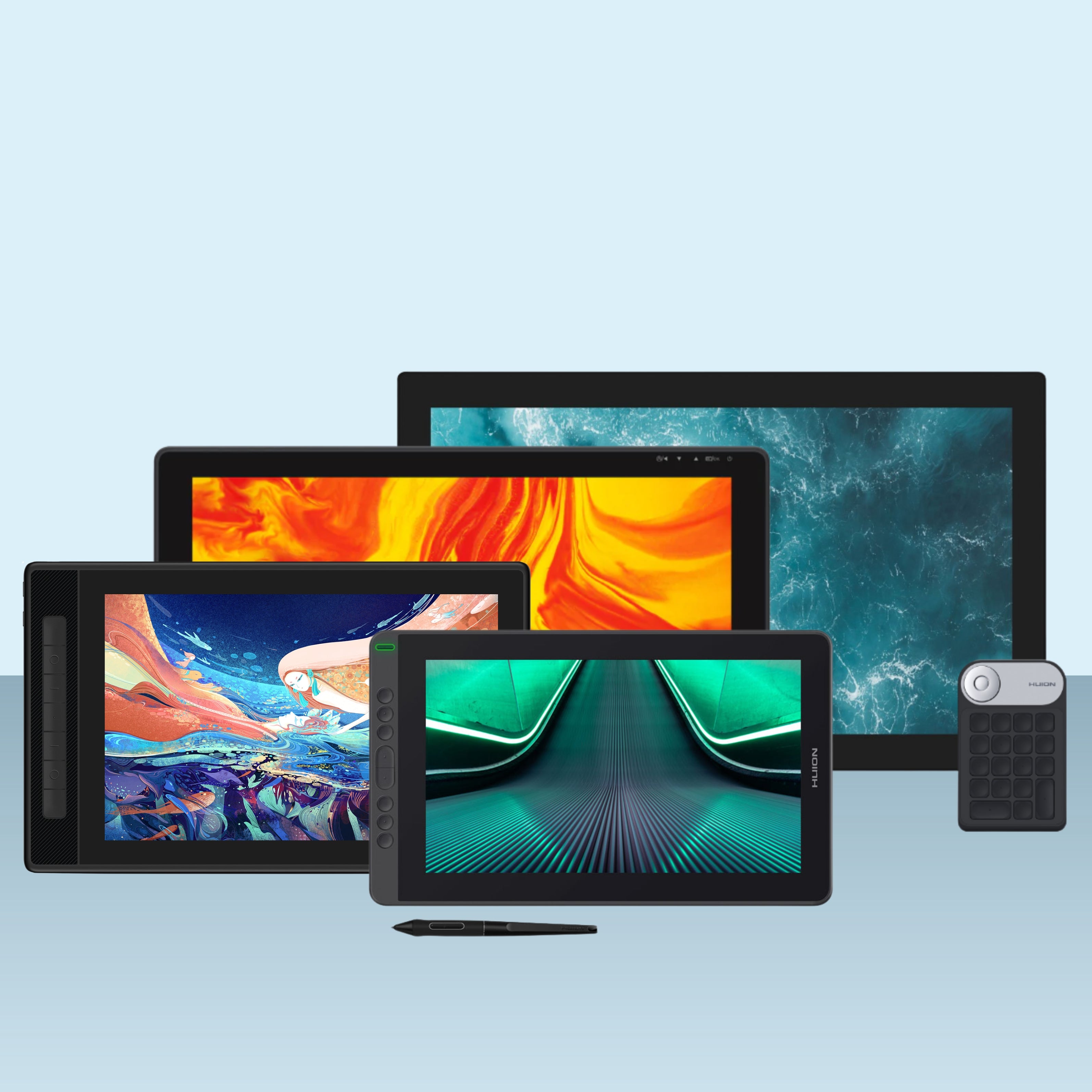Whether you should go for a Huion pen tablet or a pen display depends on your specific needs and preferences as an artist. Here are a few things to consider when making your decision:
1. Portability: Pen tablets are more portable, as they are smaller and can be easily taken on the go. Pen displays, on the other hand, are typically larger and are best suited for use in a stationary setup.
2. Screen: Pen tablets do not have a screen. Pen displays have a screen which you can use in combination with the pen. Drawing with a pen tablet might need some practice as you would need to draw on the pen tablet and look a your computer screen to see the result. Drawing on a pen display is considered more natural.
3. Software compatibility: Both pen tablets and pen displays can be used with a wide range of software, including Adobe Photoshop, Illustrator, Corel Painter, and more.
4. Budget: Pen tablets are typically more affordable than pen displays, which can be more expensive.
5. Workflow: Pen tablets are great for artists who prefer to work with a separate monitor, while pen displays provide a more immersive experience, allowing you to work directly on the screen.
5. Precision and control: Pen displays tend to have better precision and control than pen tablets, as the stylus interacts directly with the screen.
In conclusion, pen tablets and pen displays both have their advantages and disadvantages. Pen tablets are more portable and budget-friendly, while pen displays have screens and better precision and control. Ultimately, the best option for you will depend on your specific needs and preferences as an artist. It might be helpful to try out both types of devices, if possible, before making a final decision. But of course, if you want to draw directly on the screen, the pen display is the way to go. Please see the Kamvas or Kamvas Pro line up.
Shop Huion Pen Displays
Shop Huion Pen Tablets


Leave a comment
This site is protected by hCaptcha and the hCaptcha Privacy Policy and Terms of Service apply.